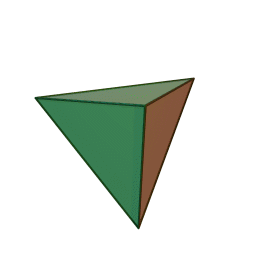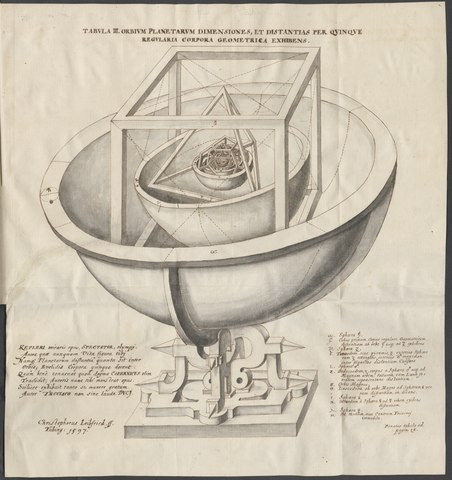Platonic solids
( Work in progress )
Platonic solids and Astrology
The relationship between Platonic solids and Astrology lies in their shared symbolism and elemental connections. Platonic solids are geometric shapes, each associated with one of the classical elements (earth, air, fire, water). Similarly, in Astrology, the elements (earth, air, fire, water) are crucial in understanding signs and their characteristics.
Studying both Platonic solids and Astrology can offer a deeper insight into the natural world and our place within it. They provide different perspectives on how elements influence our lives, from tangible, geometric forms to abstract, astrological energies. Both offer valuable insights into understanding and harmonizing with the elemental forces that shape our experiences.
Platonic solids
"Kepler followed Proclus and believed that 'the main goal of Euclid was to build a geometric theory of the so-called Platonic solids.' Kepler was fascinated by Proclus and often quotes him calling him a 'Pythagorean'."
Platonic solids are the building blocks of all existence.
In three-dimensional space, a Platonic solids, also called the regular solids or regular polyhedra, are convex polyhedra with equivalent faces composed of congruent convex regular polygons. There are exactly five such solids: the cube, dodecahedron, icosahedron, octahedron, and tetrahedron, as was proved by Euclid in the last proposition of the Elements. Geometers have studied the Platonic solids for thousands of years. They are named for the ancient Greek philosopher Plato who hypothesized in one of his dialogues, the Timaeus, that the classical elements were made of these regular solids.
In his work Timaeus, Plato describes a very precise theory for how the universe and its elements are constructed. As there are four elements and five Platonic solids, one is necessarily left out. Here is Plato's explanation:
"And there is a fifth figure (which is made out of twelve pentagons), the dodecahedron - this God used as a model for the twelvefold division of the Zodiac." (Plato's Timaeus, translated by B. Jowett, Project Gutenberg, 2008)
While this may be an overzealous translation - an alternative by the same translator reads, "There was yet a fifth combination which God used in the delineation of the universe." (Elpinor, 2006) - the correlation of the twelve faces of a dodecahedron with the twelve constellations of the Zodiac seems universally understood.
These shapes are critical to formulating and recognizing the laws of physics and prompt a tangible reality that we experience. They explain and generate geometry, architecture, form, function, harmony, and balance. Plato assigned them all an element and symbol the same way we would assign meaning to signs of the Zodiac, through character, qualities, tendencies and perception. The platonic solids are a canvas in which we divinate nature through craftsmanship, art and logic.
Fire - Tetrahedron
The simplest of the elements also the processing element or element of change and the first in the astrological new year. "the heat of fire feels sharp and stabbing."
Earth – Hexahedron or Cube
The building element of construction and systems. "These clumsy little solids cause dirt to crumble and break when picked up in stark difference to the smooth flow of water."
Air – Octahedron
The Element of thought, science and communications." Air is made of the octahedron; its minuscule components are so smooth that one can barely feel it."
Water – Icosahedron
The element of renewal, life, and growth. "Water, the icosahedron, flows out of one’s hand when picked up, as if it is made of tiny little balls."
Ether – Dodecahedron
"Of the fifth Platonic solid, the dodecahedron, Plato obscurely remarks, "…the god used [it] for arranging the constellations on the whole heaven". Aristotle added a fifth element, aithēr (aether in Latin, "ether" in English) and postulated that the heavens were made of this element, but he had no interest in matching it with Plato’s fifth solid."
Planets and Platonic solids
Johann Kepler discovered in 1596 that the ratios of the orbits of the six planets known in his day were the same as the ratios between nested Platonic solids. Kepler was understandably quite impressed with this discovery and called it the Mysterium Cosmographicum.
Imagine the orbit of each planet being the equator of a spherical shell centered at the sun. The five regular solids fit snugly into the spaces between the shells. Between Mercury and Venus you can insert an octahedron. Its inradius is the distance of Mercury to the sun, and its circumradius is the distance of Venus to the sun. You can fit the other regular solids in similarly, the icosahedron between Venus and Earth, the dodecahedron between Earth and Mars, the tetrahedron between Mars and Jupiter, and the hexahedron (cube) between Jupiter and Saturn.
Further reading and references:
- Plato - Wikipedia
- Platonic solid - Wikipedia
- Cosmos: The Platonic Solids - YouTube
- The Platonic Solids - Sacred Geometry - YouTube
- Sacred Geometry Explained Part 1 of 2 - YouTube
- Sacred Geometry Explained Part 2 of 2 - YouTube
- Morphing Platonic Solids (Sacred Geometry by ieoie) - YouTube
- The Elements: Classical Elements and Platonic Solids - YouTube
- Mysterium Cosmographicum - Wikipedia
- Kepler's Model [With Up and Atom !] - YouTube
- Mysterium cosmographicum by Johannes Kepler, 1596 edition, in Latin, full text scan, 181 pp
Carl Sagan's Cosmos: 3. The Harmony of the Worlds
This episode is a historical re-creation of the life of Johannes Kepler, the last scientific astrologer, the first modern astronomer and the author of the first science fiction novel. Kepler provided the insight into how the moon and the planets move in their orbits and ultimately how to journey to them. It's also a story about the scientific process of discovery, and how the search for truth is never easy but always worthwhile.





